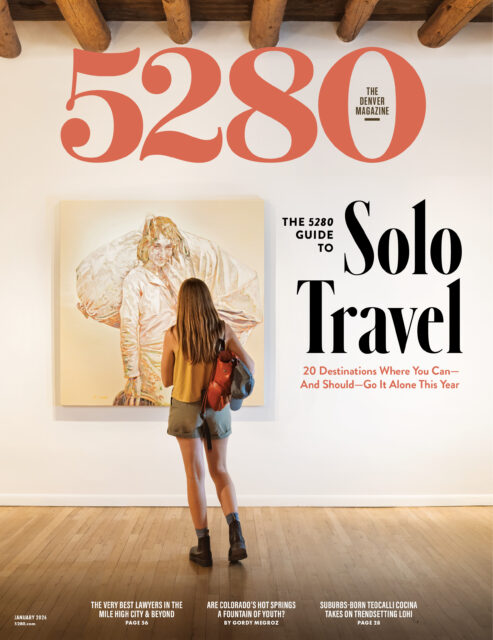The Local newsletter is your free, daily guide to life in Colorado. For locals, by locals.
After the first two days of Denver protests in response to George Floyd’s killing, I got tired of seeing what the TV was showing me, and I wanted to witness what was happening for myself. I’m glad I did, because there was more to what was going on than dumpster fires and tear gas. What I felt was a lot of energy mixed with peace and chaos. This is what I saw at the Black Lives Matter protests. —Kevin Mohatt

Late Saturday afternoon, hours before the curfew, Denver Police advance toward Civic Center Park, heavily armed with flash-bang grenades, tear gas launchers, gas masks and body armor. The police form a wall on each side of the park, boxing protesters in on Lincoln St. in front of the Capitol.

Anger begins to intensify from protesters who were already enraged by police violence. A few protesters yell and curse at the officers. Some throw water bottles; others plead with officers to join them in the protests.



Both the protesters and law enforcement officers remain relentless on Saturday, and tensions mount. Demonstrators face off with Denver Police, which triggers police to react with an eruption of rubber bullets, flash-bang grenades, pepper balls, pepper spray, and tear gas. The explosive bang of the grenades is so loud and disorienting that people hunch down, hesitant even to run. Protestors flee in all directions. Some take cover behind trees or statues in the park. Others run to the lawn of the Capitol near Colfax, where individuals with red crosses taped to their shirts have set up makeshift first-aid stations stocked with bottles of water and jugs of milk. The milk helps mitigate the burn of the tear gas and pepper spray. Some protesters hunch over and cough uncontrollably with their eyes shut tightly. The medics rush to those in distress and pour cups of milk over their faces.
Eventually, the tear gas subsides and the protesters regroup in front of the Capitol. As they return, the protestors either raise their arms in the air, take a knee, or lie down in the street.




Throughout the demonstrations, protesters take turns on the bullhorn expressing emotional pleas for change, personal stories of what it means to be Black in America, and outright anger toward the police.

By Sunday, law enforcement officers have changed their tactics; they don’t engage the protestors as much and watch from a distance. Throughout the day, helicopters fly overhead, drones hover and swoop down, and cops watch from the rooftops of nearby buildings. Several protesters say they believe plain-clothed officers are among the crowd, but hardly any uniformed police are seen on the ground in the vicinity of the protests.

By Tuesday evening, crowds have grown significantly and now fill Civic Center Park. A peaceful march ensues down Broadway, completely filling the streets for several blocks. Cops stay back, organizers call for order—and even eject individuals who act disorderly from the march—and passersby in cars honk their horns in support of the demonstrators.










